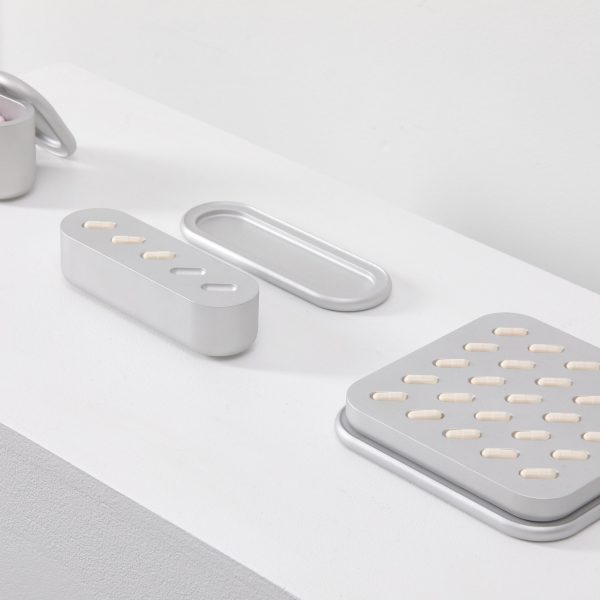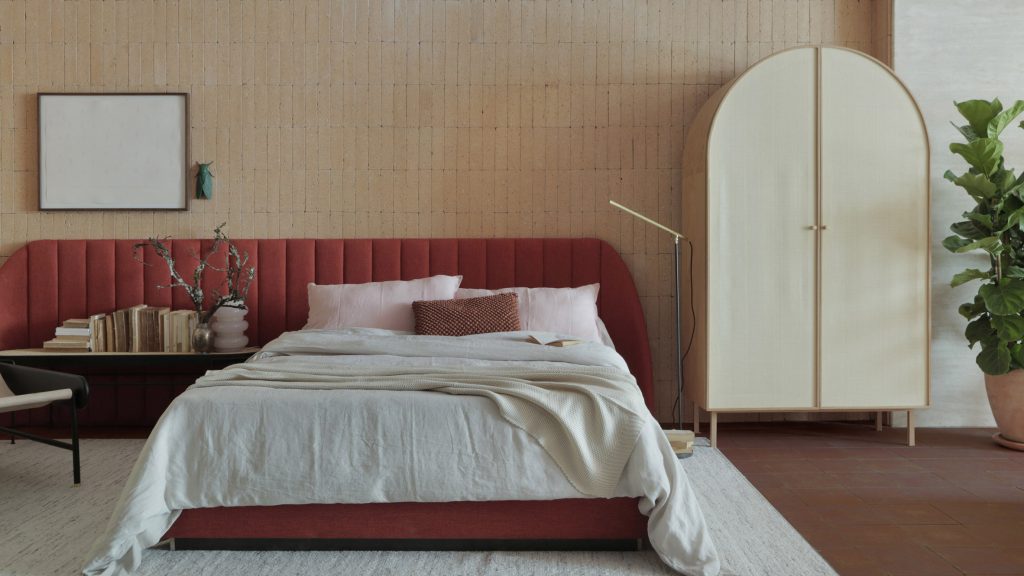[ad_1]
On the altar of an 1850s gothic revival church, 12 students and a small team of instructors dress a rough wood-stud-and-drywall construction with tape and mud. The next day, the small white room has been roughly cut into pieces, removed from the altar-cum-woodshop, scrawled in graffiti, and remixed into a tight labyrinth set in the nave of the church next to a vast number of architectural experiments. It’s my second day in Buffalo, New York, and I’m standing in the drywall maze discussing the typical sites of architectural tourism I’ve seen in my brief time in the city—Sullivan, Wright, Richardson. The underlying tone of the conversation leaves unsaid that the preservation attitudes of all three seem inadequate next to the model of historical experimentation we’re standing within.
The conversation is cut short as I sit with the group for a presentation of their cabinet-grade display cases for old tools, called a “Toolbox Talk.” The structure of presentation and review would be familiar to any architecture student or professor, but the difference in collective engagement with the process far outstrips that of most university settings. The instructors fade into the crowd as the students guide and direct the conversation with questions and meaningful critique. The cohort is the 2024 spring iteration of the Society for the Advancement of Construction Related Arts (SACRA), and the church—along with all its full-scale mock-ups, installations, models, drawings, experiments, events, and public works—is Assembly House 150 (AH150).

Started in 2014 by artist-architect-educator Dennis Maher, Assembly House 150 is a loose bag combining an arts and public outreach project. As described by Maher, it’s equal parts “construction trades workshop, art and design studio, and dynamic museum.” The various initiatives—of which SACRA is a major component—come together to produce an intentionally messy whole, more interested in the overlaps and slippages between historic preservation, labor education, and design practice than in any of their specific qualities. As a result, very few of the disciplinary bounds and typical goals of the three fields hold within the walls of the church, and increasingly—through public commission work—they disperse throughout the city that AH150 calls home.
In my time visiting the site, I’m struck by the flexibility of material choice in a school about “construction basics.” The church is full of found objects and loose parts, and in anecdotes from both Maher and others around the city, many people have taken the opportunity to “donate” various objects of specious value to the site. These objects then find their way into both the educational program and public commissions. In my conversations with the team and apprentices at AH150, they made clear that material is primarily valued for its economy and accessibility. In that frame, a sheet of plywood and a dusty desk from an estate sale begin to look alike: They are both readily at hand. Maher, who is also a faculty member at the University of Buffalo, also sees use in these historic materials as teaching tools: “We’re trying to build an awareness of the value of those elements to appreciate the qualities that they offer, but we’re not going to go back and do it exactly like they did 100 years ago. We can understand how it was done, but now we will do it in a different way.”

Both the construction process of these found objects and their formal qualities play a critical role in the design education that comes with SACRA’s workforce training basics. For Maher and the team, the biggest goal of the program is to extend beyond the skills into worker autonomy: “SACRA has been a key initiative to help provide basic skills to people who want to get into construction-related careers, but equally important is to empower people outside of architecture proper to have agency in shaping their own surroundings,” he said. To that end, the classwork and the public commissions reshape conventions of typical architectural labor to allow for design autonomy at the level of the worker.
In each of the projects I was shown, the AH150 team aimed to facilitate engagement with students, skilled trades workers, and various publics by treating the projects as open frameworks for individual and productively discordant expression. This attitude disrupts the typical “design into construction” timeline of construction and makes the act of work itself the medium of both Maher’s artistic expression and various politics of collectivity. It similarly disrupts the typical drawn products of architectural work and thinking: “The drawing doesn’t specify what everything needs to look like,” Maher explained. “It operates as a general outline for a basic framework, and then the variables are allowed to fit into that.”

Within each of those spaces marked for individual intervention, Maher sees potential for self-actualization. The ethos of AH150 shifts the imparted meaning of architecture from a missive sent by a not-present author (the architect) to being held within the collective production process itself. While the various publics that use the products of AH150 are well served in their own aesthetic experience, it’s clear that the full benefits are in joining the production of these spaces. The feeling that carries through the installations themselves suggests taking control of the production of the city and its spaces—and moving toward new collective ends.
Spending time in the largely windowless church, it’s easy to forget that this is the exception. The works by AH150 and especially SACRA feel like fragments from another world, one where architecture and the city are allowed to breathe as open frameworks without the pressures of over-professionalization. Instead of retreating behind the discursive trials of academia or the bureaucratic castle of professionalization, AH150 embraces the mess and ease of shared labor to move beyond the spatial into the directly social. In one of my last conversations with Maher about our own personal work, we agreed that materials, self, and space are in a co-constitutive relationship in a constant state of flux. The best practice for both ourselves and the people around us is to treat the three as a field of constant invention.
Adrienne Economos Miller is a designer and educator with research interest in work, waste, and queer deconstruction.
[ad_2]
Source link











